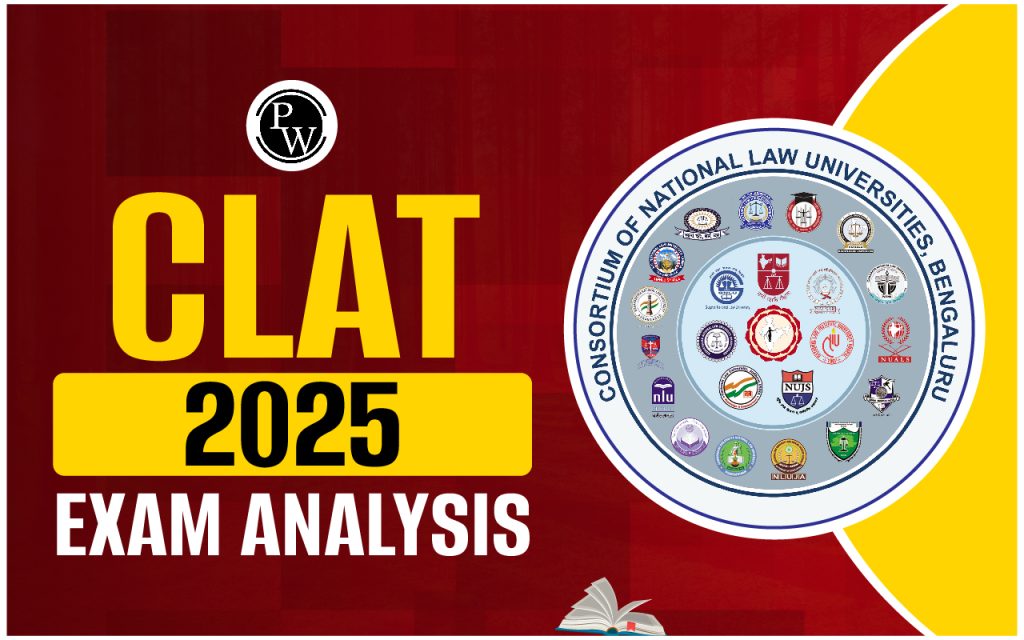With CLAT 2025 just around the corner on December 1, aspirants are gearing up for the challenge. While preparing for this year’s exam is the priority, it’s also essential for future aspirants to understand how trends in CLAT 2025 can shape strategies for CLAT 2026. Here’s a detailed breakdown:
CLAT 2025 Analysis: What to Expect
Here is the complete guide on what to expect from CLAT exam analysis 2025 for the students who are preparing for next year CLAT exam
- Exam Structure: Stable and Consistent
The CLAT Consortium has followed a standardized pattern since its major revamp in 2020.
For CLAT 2025, expect:
- 120 questions across five sections, emphasizing comprehension and reasoning.
- Focus on testing analytical, critical thinking, and reading skills over rote learning.
- Section-Wise Predictions for CLAT 2025
- English Language
Trend: Dominated by comprehension passages (5–6), with questions on tone, inference, and vocabulary.
Prediction for 2025: Expect passages on contemporary issues, historical events, or philosophical themes. Vocabulary questions might be embedded within the passage context.
- Current Affairs & General Knowledge
Trend: Questions from the past year’s current events with minimal static GK.
Prediction for 2025:
Focus on events from January to November 2025.
Likely topics: international relations, awards, landmark Supreme Court judgments, climate initiatives, and sports.
- Legal Reasoning
Trend: Principle-fact-based case scenarios testing logical application rather than prior knowledge of the law.
Prediction for 2025:
- Questions on criminal law, constitutional law, contracts, and torts.
- Situational passages requiring careful analysis of principles.
- Logical Reasoning
Trend: Argument-based questions requiring evaluation of conclusions, assumptions, and flaws.
Prediction for 2025: Around 4–5 passages with questions on abstract reasoning and policy discussions.
- Quantitative Techniques
Trend: Arithmetic-heavy, with data interpretation questions on tables, charts, and graphs.
Prediction for 2025:
Expect 10–13 questions from ratios, percentages, and averages, with practical application in DI sets.
Cut-Off Trends and Expectations
Top NLUs: A score of 95+ is generally safe for securing admission in Tier-1 NLUs like NLSIU Bengaluru and NALSAR Hyderabad.
Moderate NLUs: Scores of 75–85 can secure seats in Tier-2 NLUs.
Insights for CLAT 2026
- Importance of Early Preparation
Trend Analysis: Aspirants targeting CLAT 2026 should note that consistent patterns have emerged since 2020, with a heavy emphasis on comprehension and reasoning skills.
Start preparing early, focusing on reading newspapers like The Hindu and Indian Express daily for current affairs.
- Focus on Dynamic Preparation
CLAT emphasizes dynamic content, particularly in Current Affairs and Legal Reasoning. Aspirants for 2026 must develop a habit of staying updated with the latest events and judgments.
- Practice-Based Approach
Mock tests and sectional quizzes are critical. Analyze your performance regularly to identify strengths and weaknesses.
For CLAT 2026, appearing for simulated exams under timed conditions will help you prepare for the real challenge.
- Reading and Analytical Skills
Build a strong foundation in reading comprehension. Focus on understanding arguments, identifying assumptions, and drawing logical conclusions.
Engage with diverse reading material: editorials, essays, and academic articles.
Key Takeaways for CLAT 2025 and 2026
For CLAT 2025 Aspirants:
- Focus on time management to handle the comprehension-heavy format.
- Prioritize revision and mock tests in the last few days.
For CLAT 2026 Aspirants:
- Start early with a clear focus on reading and reasoning.
- Track trends in CLAT 2025 to identify potential shifts in difficulty or emphasis areas.
- Stay consistent with current affairs updates.
Conclusion:
CLAT 2025 sets the stage not just for the upcoming batch of aspirants but also for those targeting CLAT 2026. By analyzing patterns and predictions, aspirants can tailor their preparation strategies effectively. Whether you’re sitting for CLAT this year or planning for the next, a mix of smart work, regular practice, and consistent focus will help you achieve your dream of securing a seat in a top National Law University.

